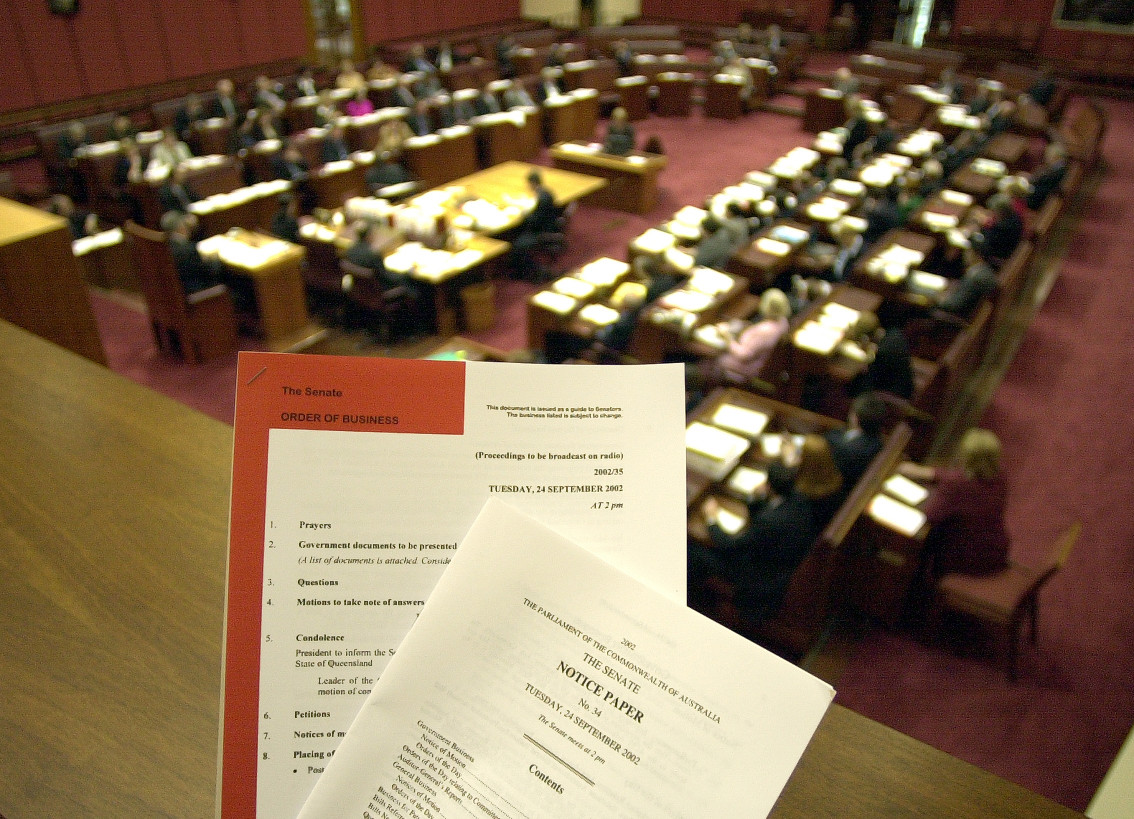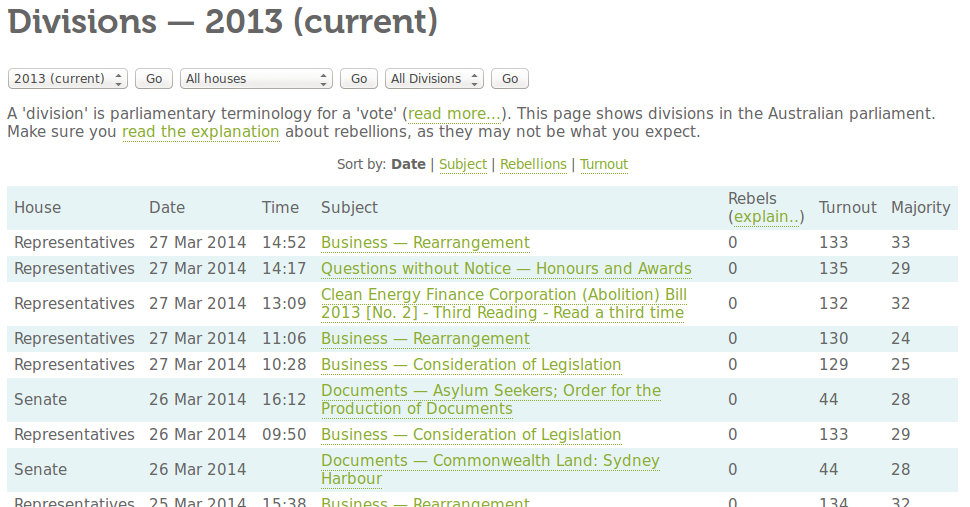
Hello! Welcome to a series of posts about the OpenAustralia Foundation’s new conception, a parliamentary vote tracker. This project is based on the Public Whip, a site developed in the UK by Julian Todd and Francis Irving. The point of this project is to make the processes and procedures of parliament more accessible to the general public. Our project takes voting data from Hansard to see exactly how our MPs are voting on legislation.
In Australia we are truly lucky to have an established democracy. However, this system is not as open and accessible as it could and should be. Information about our politicians and how they represent us is freely available but the data is convoluted and too difficult to understand. The language used in Parliament and copied into Hansard is often complicated, and the processes are too far removed from what is easily understood. One of our main goals in this project to make what happens in parliament – the debates, the votes and the proposed and passed legislation – more easily available to the public eye.
This is why we have been working on this project. Our end goal is for any member of the public to access our site and be able to see how a Member of Parliament or Senator votes on any number of issues. We are dissecting the votes in Parliament to make each division (or vote on a piece of legislation) easily understood. Our conception focuses on the context surrounding a piece of legislation, what the legislation actually proposes, the impact it has and the debate surrounding it in Parliament. We aim to be able to distil these votes down so that anybody can come to our site and understand exactly what each vote in Parliament really means.
We are narrowing these issues down to specific policies. Under this notion, a policy is a statement that you can objectively measure votes against. Most basically, policies are just a group of divisions (votes) in parliament. As a Research Assistant, my role is to look at these votes and develop policies by which to measure a Member of Parliament’s or Senator’s stance on an issue. A key aspect of this is keeping the language plain, which is something that Hansard is not.
Firstly, let’s get up to date on the lingo. A division is simply an official vote in parliament. For example, representatives may vote on a motion to read a bill for a second time (or, put another way, vote on a motion to agree with the main idea of a bill). Divisions are only called when there is not a clear indication of how many representatives either vote aye (yes) or no in relation to motions. This in and of itself is a problem with parliament – we only have data on controversial votes. Most of the legislation passed in Parliament does so without a division. This is because when there is bipartisan support on an issue it is clear that it will be passed and a division is not called.
Along the way we have spitballed, debated and drafted the best way to select and articulate what exactly our policies should be. Defining these policies and our method of selection has been one of the largest hurdles in the project so far. We are still deciding how best to address these concerns, and are really open to any feedback and advice you have, dear users of the internet.
